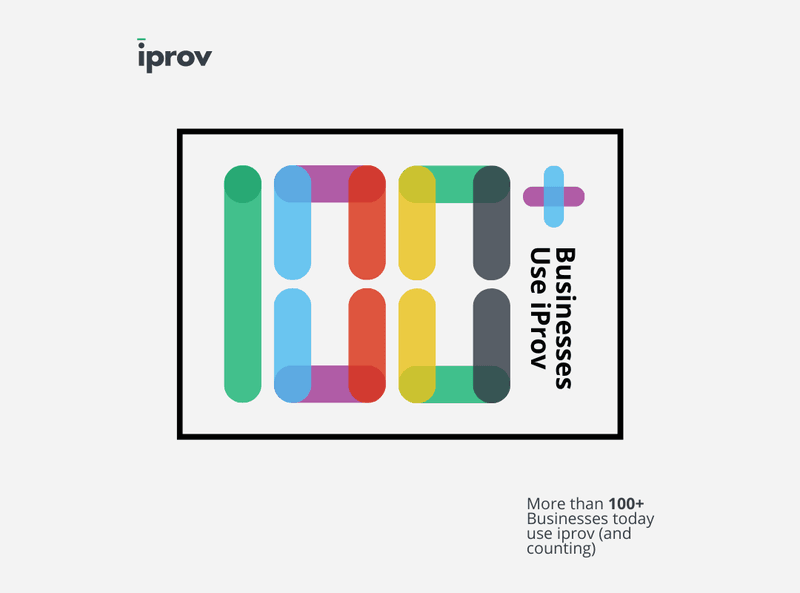
While “branding” has been traditionally synonymous with the corporate sector, marketing for nonprofits has become a vital tool to ignite awareness, cultivate connections with donors, and secure financial resources necessary for their missions.
This article tackles in more detail marketing for nonprofits, specifically how effective promotion and brand recognition can greatly influence fundraising initiatives.
Read on to discover marketing tactics you can maximize to enhance your fundraising campaigns.

Definition of Terms
Before we proceed, let’s first establish the definition of some of the terms used all throughout the article.
- Brand: Refers to the overall perception and image of a non-profit organization. It encompasses its mission, values, visual identity, and reputation.
- Branding: The strategic process of creating and managing the brand of a non-profit. It involves defining the organization's unique identity and communicating it consistently across various channels.
- Marketing: In the context of non-profits, marketing involves activities aimed at promoting the organization, its programs, and its mission. It includes market research, target audience identification, and the development of strategies to reach and engage stakeholders.
- Promotion: The specific tactics and techniques used to raise awareness and generate interest in a non-profit's cause or initiatives. This can include advertising, public relations, social media campaigns, and other communication efforts.
- Agency: Typically refers to an advertising agency that non-profit organizations may collaborate with to outsource certain non-core functions. These functions can include creative development, social media marketing, paid advertising, website development and optimization, print materials, newsletter formatting, and more.
- Donors: Individuals, organizations, or entities that contribute financial resources or other forms of support to a non-profit organization. Donors play a crucial role in sustaining and advancing the mission of non-profits.
- Fundraising: The process of seeking and collecting financial contributions or donations to support the operations, programs, and initiatives of a non-profit organization. Fundraising efforts can include events, campaigns, grant applications, and donor stewardship activities.
The Relationship Between Branding and Donor Engagement
When it comes to fundraising, branding for nonprofits should spark emotional connections, establish credibility and trust, and set nonprofits apart from their peers. When a nonprofit effectively communicates its mission, values, and impact through branding, it creates a resonating message that captures the hearts and minds of potential supporters.
Let's dive deeper into these aspects to better comprehend how they influence your fundraising initiatives.
Credibility, Trust, and Differentiation
Donors seek trustworthy organizations to utilize their contributions responsibly and make a tangible difference. As a nonprofit, consider this as an opportunity to showcase your transparency, expertise, and commitment to your cause. A strong brand presence instills confidence in potential donors and sets your organization apart from others in a crowded nonprofit landscape.
Consistency in Branding
Nonprofits that maintain a consistent brand image across various touchpoints, including their website, social media platforms, and offline materials, are more likely to cultivate long-term relationships with donors.
Consistency builds familiarity and reinforces the organization’s identity in supporters’ minds. By delivering a consistent brand experience, nonprofits create a sense of trust and reliability. And this leads to sustained donor engagement and ongoing support.
A best practice is to have your agency develop a brand guide – typically a 15-25 page document showing approved uses of your logo, images, font types, colors, tagline, and other marks that you want to be used consistently across messaging and advertising platforms.
Strategies for Developing a Compelling Brand Identity and Messaging
By learning the integral role of branding and promotion in fundraising success, it becomes evident that implementing strategic approaches can significantly empower nonprofits. It allows them to craft a brand story that resonates with their audience and communicates the organization’s unique value proposition. Here are four key strategies to consider when doing so:
Define Who You Are
To build a strong brand identity, nonprofits must first define their mission and core values. This involves articulating a clear and concise mission statement encapsulating the organization’s purpose and goals. Identifying the unique selling proposition helps highlight what differentiates the nonprofit and why potential donors should support its cause.
Conduct Audience Research
To connect with donors effectively, nonprofits should conduct thorough audience research. Consider these methods to help in your audience research efforts:
- Surveys and Questionnaires
Surveys and questionnaires can be used to collect data directly from your audience. These can be distributed through online platforms, email campaigns, or even during events and activities. The surveys can cover donor demographics, interests, motivations for giving, preferred communication channels, and engagement preferences.
Through careful analysis of the responses, you’ll gain valuable insights into your audience’s expectations and tailor your strategies accordingly.
- Donor Interviews and Focus Groups
Engaging in direct donor communication through interviews or focus groups can provide nonprofits with in-depth qualitative data. These interactions allow nonprofits to delve deeper into donor motivations, experiences, and perceptions. Donor interviews and focus groups can be conducted in person, over the phone, or via video conferencing.
- Social Media ListeningTips for Integrating Branding and Promotion Into Fundraising Strategies
Expanding our understanding of the role of branding and promotion in nonprofit success, we move into the practical application of these concepts within fundraising strategies.
Craft a Compelling Brand Story
Marketing for nonprofits relies on a powerful brand story. Strive to develop a narrative that highlights the organization’s journey, impact, and the lives it has transformed. You can create an emotional connection with donors and demonstrate real-world contributions by showcasing the tangible outcomes of your work.
Design a Visually Appealing Brand Identity
Visual elements play a crucial role in brand recognition. Nonprofits should invest in creating a visually appealing brand identity that reflects their mission and values. This includes designing a compelling logo and selecting appropriate color palettes and images that evoke the desired emotions. It should also establish brand guidelines that ensure consistency across various platforms and materials.
But what if you have a limited budget? This is the point where you’ll recognize that resourcefulness is an essential aspect of marketing for nonprofits. You can work around this challenge by employing practical strategies. Here are some actionable tips to consider:
- Leverage logo-building tools: Nonprofits can save costs using online logo-building tools that offer affordable or free options. Platforms such as Canva, Hatchful, and LogoMakr provide intuitive interfaces and customizable templates to create professional-looking logos without requiring design expertise.
- Take advantage of free stock photo websites: Unsplash and Pixabay are some websites that provide free high-quality images.
- Utilize website builders: Website builders can be a cost-effective solution for nonprofits aiming to establish an impressive online presence. Intuitive platforms, such as Wix, Squarespace, and WordPress.com, provide a range of visually appealing templates and customizable layouts. This empowers nonprofits to create captivating websites without needing expensive web development services. They can also include features such as integrated donation tools, blog functionality, and social media integration.
Tips for Integrating Branding and Promotion Into Fundraising Strategies
Expanding our understanding of the role of branding and promotion in nonprofit success, we move into the practical application of these concepts within fundraising strategies.
Incorporate Branding and Promotion at Each Stage of the Fundraising Process
To maximize the impact of branding and promotion, it’s crucial to weave them into every stage of the fundraising process:
- Acquisition: Attract new supporters through a captivating brand story, cohesive messaging, and appealing visual identity.
- Cultivation: Personalize communication, leverage storytelling, and organize branded events to build relationships and deepen engagement.
- Solicitation: Tailor appeals, create impact-driven campaigns, and utilize multi-channel promotion to encourage donations effectively.
- Stewardship: Send personalized acknowledgments, develop recognition programs, and provide impact reports to foster long-term relationships with donors.
Leverage Digital Platforms for Brand Promotion
Digital platforms offer vast opportunities to promote your organization’s brand and fundraising initiatives. Here’s how to make the most out of them:
- Websites: Optimize your website as a hub for your brand. Make sure it reflects your mission, showcases its impact, and provides easy donation options.
- Social media: Utilize social media channels to share compelling stories, engage with supporters, and drive donations. Maintain a consistent brand presence and encourage user-generated content.
- Email marketing: Use email campaigns to deliver targeted messages, share success stories, and provide updates on fundraising initiatives. Incorporate branding elements for recognition and consistency.
- Content creation: Develop engaging and informative content, such as blog posts, videos, and infographics, that align with your brand values and inspire action. Share this content across various platforms to expand your reach.
Creating Consistent Donor-centric Messaging
Crafting donor-centric messaging for nonprofits is crucial for connecting with supporters on a personal level. Achieve consistency and appeal with these steps:
- Understand your audience: Research and segment your donor base to tailor messaging and communication channels to their preferences and interests.
- Highlight impact: Clearly communicate the tangible outcomes of donations, emphasizing how supporters’ contributions make a difference.
- Use emotional appeals: Appeal to the emotions and values of your donors. Connect them to the cause and motivate them to be involved.
- Maintain consistency: Ensure messaging matches your brand voice, values, and positioning. Use consistent language, tone, and visuals across all communication channels.
Collaborating With Marketing and Communications Teams
Nonprofits can also collaborate with fundraising and marketing/communications teams. These partnerships can provide access to expert knowledge, resources, and methodologies to conduct comprehensive studies. Here’s how to align efforts:
- Establish shared goals: Work together to define common objectives that align branding, promotion, and fundraising initiatives.
- Share insights and data: Collaborate on audience insights, fundraising performance, and market trends to inform branding and promotional strategies.
- Coordinate campaigns: Plan integrated campaigns that leverage fundraising and marketing channels to amplify reach and impact.
- Foster open communication: Maintain regular team communication for consistent messaging, alignment, and seamless execution.
Measuring Effectiveness and Refining Strategies
To optimize branding and promotion strategies for nonprofits, measuring their effectiveness is crucial. Here’s how to gauge success:
- Track donor responses: Monitor donor engagement, conversion rates, and responses to appeals to assess the impact of branding and promotion efforts.
- Analyze engagement metrics: Evaluate website traffic, social media interactions, email open rates, and click-through rates to gauge audience engagement and interest.
- Evaluate fundraising results: Measure the correlation between branding and promotion efforts and fundraising outcomes, such as donation amounts and donor retention rates.
- Solicit feedback: Gather feedback from donors to understand their perception of your brand, messaging effectiveness, and overall experience.
- Continuously improve: Use the insights gained from measurement and feedback to refine and optimize branding and promotion strategies over time.

Amplify Your Nonprofit’s Impact With iProv
It’s undeniable that marketing for nonprofits shouldn’t take a step backward. Nonprofit organizations are encouraged to prioritize branding and promotion efforts, as they are key drivers of fundraising success.
Investing in impactful branding and implementing effective promotion strategies in marketing for nonprofits will yield long-term benefits. This allows nonprofits to build meaningful connections with donors, inspire support, and create lasting change.
Contact iProv today to take your branding to new heights and supercharge your fundraising success!
